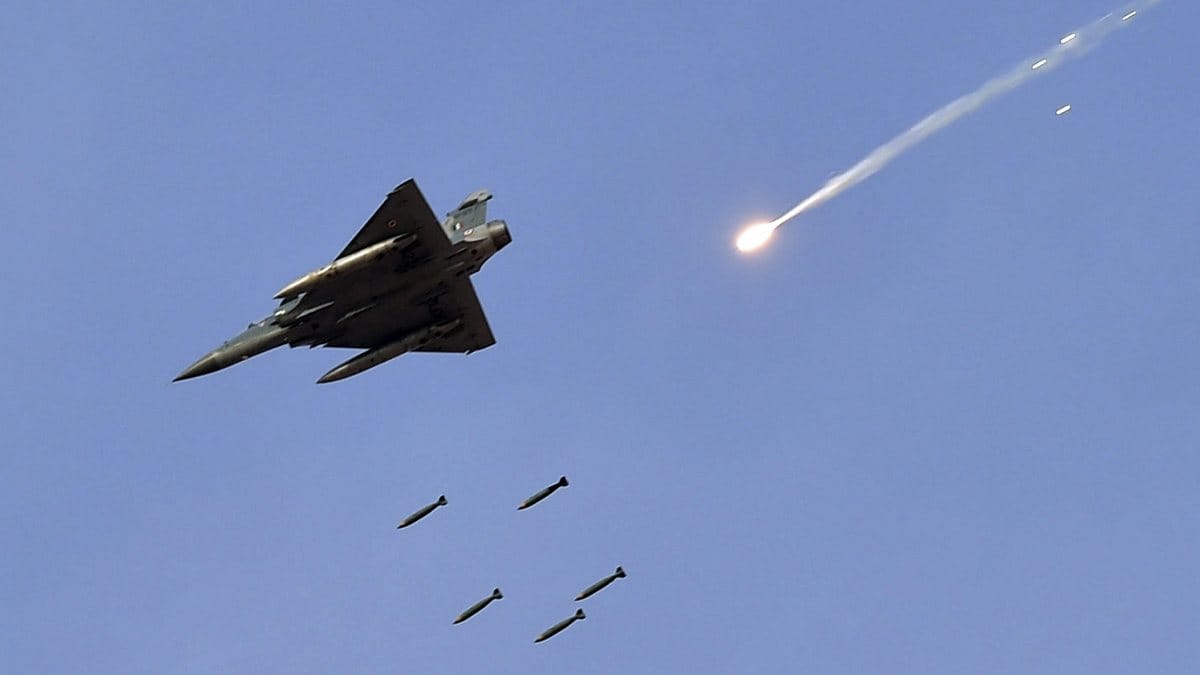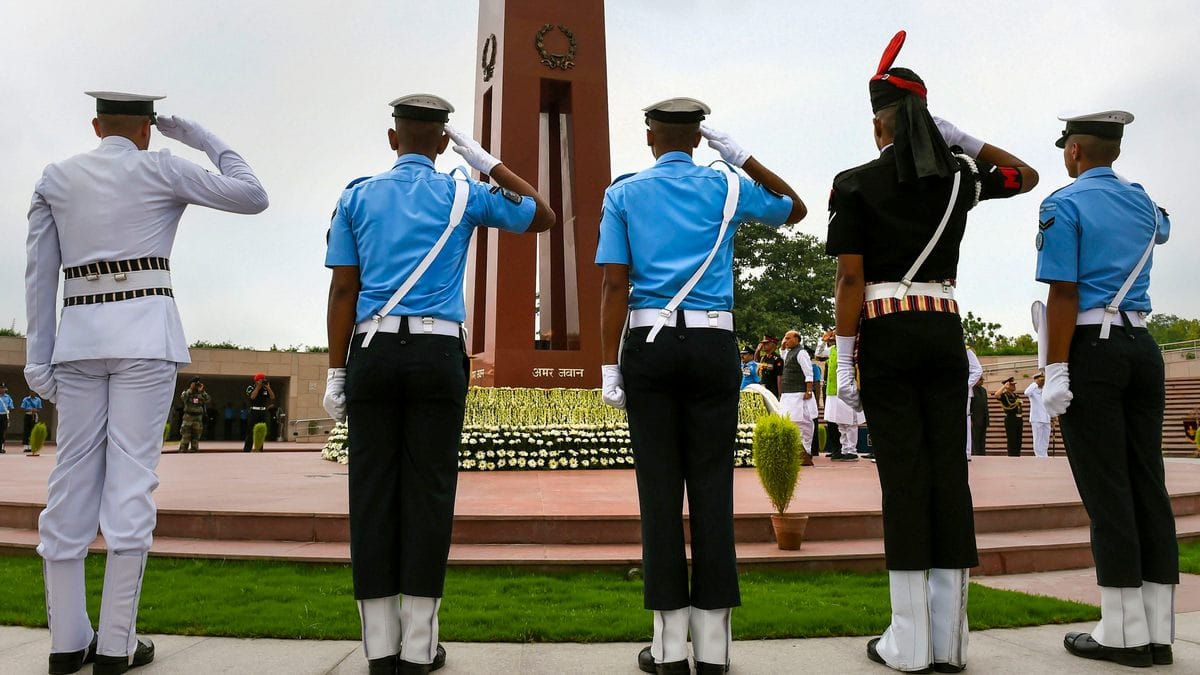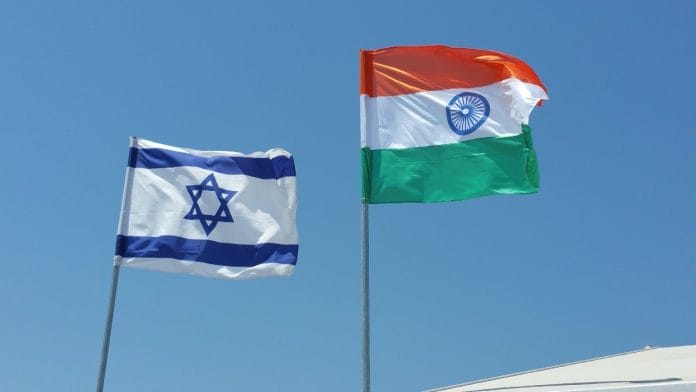New Delhi: India was slow to warm up to the idea of Israel when the latter came into existence in 1948, having voted against the partition of the erstwhile Palestine in 1947, and then against Israel’s inclusion in the United Nations in 1949.
India recognised Israel’s nationhood in 1950, but it would be another 42 years before full diplomatic relations were established.
The reason why India voted against the UN Resolution in 1947, which partitioned Palestine between Jews and Palestinian Arabs, was because then Prime Minister Jawaharlal Nehru wanted a federal state instead with both communities enjoying great autonomy with Jerusalem enjoying special status.
Over the years, however, a significant relationship has taken shape between the two nations in the realm of defence. From just purchasing defence equipment, to developing and manufacturing them through joint ventures, the relationship has grown in leaps.
The turning point for India-Israel defence relationship was the Kargil conflict of 1999.
Israel came to India’s aid during the Kargil war, as the Indian armed forces tried to force back Pakistan Army personnel who had infiltrated Indian territory with an aim to sever the link between Kashmir and Ladakh.
Writer and academic Nicolas Blarel, an associate professor of international relations at Leiden University, Netherlands, explains in his book ‘The Evolution of India’s Israel Policy’ that, when trying to provide close air support to ground troops, the Indian Air Force (IAF) faced several problems — spotting Pakistani bunkers, inaccurate unguided missiles, and the explicit instruction not to cross the LoC.
To adapt to these constraints and specifically to correct the problem of accuracy in the Kargil heights, the then Air Chief Marshal Tipnis chose to commit IAF Mirage 2000H fighters — capable of delivering laser-guided bombs — to ground-attack operations.
Israel provided India with laser-guided missiles for its fighter jets, apart from mortar ammunition. Israel’s support during the Kargil conflict was crucial as India at the time faced sanctions from the US and other countries in light of the 1998 Pokhran nuclear test.
Between 2000 and 2010, Israel transferred an estimated $10 billion worth of military equipment to India.
The India-Israel relationship has seen new milestones under the Modi government. In 2017, Prime Minister Narendra Modi became the first Indian head of government to visit Israel, and there appeared to be an air of easy camaraderie as images showed him and his Israeli counterpart Benjamin Netanyahu strolling at a beach.

Their joint statement said the leaders “visualised that the two countries will become close partners in development, technology, innovation, entrepreneurship, defence and security”.
They also agreed that future developments in the sphere of defence should focus on joint development, including transfer of technology from Israel, with a special emphasis on the ‘Make in India’ initiative.
Other high-profile visits followed, by the then President Pranab Mukherjee (2015, the first by an Indian president), former Army chief Gen. M.M. Naravane (2021) and former IAF chief Air Chief Marshal R.K.S. Bhadauria (2021).
According to the Stockholm Institute of Peace and Research Institute’s (SIPRI’s) ‘Trends in International Arms Transfers’ report released in 2021, India accounted for the largest chunk — 37 percent — of Israel’s total arms exports.
The 2020 edition of the report said Indian arms imports from Israel had gone up 175 percent over the period covered (2019-20). At the time, Israel was India’s second top arms supplier after Russia.
Even so, India has always supported the two-state solution — which espouses establishing one Jewish state and one Arab country in the area between the Jordan river and the Mediterranean Sea — as an answer to the Israel-Palestine crisis, and has had a consistent, if nuanced, stand on the issue.
In December 2022, India abstained from voting on a UN resolution on Israel that sought the International Court of Justice’s opinion on the legal consequences of Israel’s “prolonged occupation” and annexation of the Palestinian territories.
The draft resolution was adopted with 87 votes in favour, 26 against and 53 abstentions.
India was one of 128 countries that voted in favour of a 2017 UN General Assembly resolution opposing the US’ decision to recognise Jerusalem as Israel’s capital, and also supported a 2018 resolution on the ‘Protection of the Palestinian Civilian Population’ against the use of “indiscriminate force” by the Israeli forces.
Also Read: Hamas has defeated the cause of Palestine. A neutral India will find it difficult to tread
Through the years
The first Israeli transfers of military equipment to India occurred in the mid-1990s, when New Delhi purchased two Israeli-made Super Dvora Mk II fast-patrol boats.
Agreements for Israel to upgrade Indian 155mm artillery guns, and to upgrade the IAF’s MiG-21 combat aircraft, followed soon afterwards.
In 2008, India successfully launched an Israeli reconnaissance satellite TecSAR-1 and, reportedly in exchange, got an X-band Synthetic Aperture Radar (SAR) installed on its RISAT-2 (Radar Imaging Satellite with all-weather capability).
In September 2014, on the sidelines of the United Nations General Assembly (UNGA), Netanyahu and Modi met for the first time, marking the first meeting between the premiers of the two nations in over a decade.
The next month, India sealed a $525 million deal to buy Israeli anti-tank missiles — a deal that was signed and scrapped more than once as the Defence Research and Development Organisation (DRDO) said it could fashion an alternative.
However, in 2020, China’s belligerence at the Line of Actual Control (LAC) prompted the Indian government to buy the Spike missiles, made by Israel’s Rafael Advanced Defense Systems, as a ‘stop gap’ arrangement.
In 2018, both countries signed an agreement to collaborate in electric propulsion systems (EPS) for small satellites, atomic clocks and GEO-LEO (Geosynchronous Earth Orbit-Low Earth Orbit) Optical Link.
During the 2019 Balakot airstrikes by the IAF, India used the Spice 2000 guidance kit to hit terror camps.

File photo of Mirage 2000 fighter jet | Manvender Vashist | PTIIn December 2020, when the standoff with China in Ladakh was in its eighth month, India awarded a $200 million contract to Israel for supplying an undisclosed number of Spice bomb-guidance kits, and between 300 and 320 Spike long-range anti-tank guided missiles.
In addition, an order was also placed for BNET broadband IP software defined radios, systems for secure communications during on-the-move tactical operations.
In 2020, India and Israel signed an agreement to expand cooperation in cybersecurity, which was emphasised as one of the key areas of bilateral cooperation during Modi’s 2017 visit.
Other Israeli equipment in use with the Indian military include three Phalcon AWACS of the IAF. Kolkata-class destroyers and Project 15B destroyers, including INS Vikrant, are fitted with multi-functional surveillance and threat alert radar (MF STAR). Indian fighter aircraft also use Israeli LITENING, precision-targeting pods meant for night/adverse weather.
Amid the LAC tensions, India also leased, then bought, four Heron-TP medium-altitude long-endurance (MALE) UAVs from the state-owned Israel Aerospace Industries (IAI). The deal to acquire 10 more Heron UAVs was signed in January 2021.
In October 2021, India and Israel formed a joint task force to formulate a 10-year plan for defence cooperation.
Taking their defence cooperation a notch higher, in 2021, India’s DRDO & Israel’s Directorate of Defense R&D signed a bilateral innovation agreement for development of dual-use technologies.
The purpose of the agreement was to promote innovation in startups and MSMEs of both countries, especially those focused on next- generation technologies and products in areas such as drones, robotics & artificial intelligence (AI).
In June 2022, Israeli Defence Minister Gantz visited India to mark 30 years of diplomatic ties and defence cooperation. The ensuing joint statement “reiterated their [India and Israel’s] commitment to deepening and expanding defence cooperation by presenting a vision for future collaboration”.
In August 2023, the IAF received the Israeli Spike non-line-of-sight (NLOS) anti-tank missiles. These missiles will reportedly be integrated with the Russian-origin Mi-17V5 helicopters.
Over the years, India has procured several Israeli weapon systems such as Harpy and Harop loitering anti-radiation drones, Popeye air-to-ground missile, Python-4 air-to-air missile, SPYDER air-defence system (which employs both the Derby and Python-5 missiles), Barak-1 air-defence missile (outfitted to Indian naval vessels), Green Pine multifunctional (search, detection, track, guidance) missile-defence radar, and Phalcon EL/M-2090 airborne early-warning and control (AEW&C) radar, fitted on Russian Il-76 transport aircraft.
At Aero India 2023 held in Bengaluru, Bharat Electronics Limited (BEL) and IAI concluded a Memorandum of Agreement to form a joint venture aimed at establishing a single point of contact for extending long-term product support services to India’s defence forces for MRSAM (medium range surface-to-air missile) systems. It will have its headquarters in New Delhi.
Jointly developed by IAI and DRDO for India’s armed forces, the MRSAM missile is capable of taking down multiple aerial targets such as jets, drones, helicopters, and incoming missiles, within a 70km range.
Kalyani Rafael Advanced Systems, a joint venture between India’s Kalyani Group and Israel’s Rafael inaugurated in 2017 in Hyderabad, rolled out in December 2022 its 100th surface-to-air missile kit and delivered it to IAF.
Not just in the armed forces, India-made Israeli Tavor x 95 guns are being supplied to central forces and various state police forces. Indian armed forces also use the Israeli-origin Galil sniper rifles.
In 2020, India signed a ‘fast-track procurement’ contract with Israel for 16,000 Negev light machine guns (LMGs).
Also Read: Yes, Israel has wronged Palestinians. But that’s not the immediate issue, terrorism is
‘Aided India tremendously’
A retired Vice Chief of Air Staff (VCAS) told ThePrint that “the air force was the first of the three services to go in for Israeli systems”.
“Gradually, the ties developed and more defence equipment started coming in. One of the initial systems that the IAF inducted was the air combat manoeuvring instrumentation (ACMI) system. India was among the first buyers of this system from DDR technologies of Israel along with Singapore,” he added.
“India then started getting in the Heron and Searcher UAVs. Then they (Israel) started helping DRDO in collaboration and they had a big role to play in the 1999 Kargil War.”

Israel, he said, has aided India tremendously when it comes to AWACS and it’s a significant force multiplier as far as India is concerned.
However, with India stressing on self-reliance in defence, it remains to be seen to what extent Israel will share technology, the former VCAS said.
“It is their bread and butter and the country depends on cutting-edge defence exports for the survival of its economy and to remain viable as a military force given the geopolitical situation it is surrounded by,” he said.
Defence analyst Anant Mishra, Visiting Fellow at University of South Wales, said the core issues that the two countries cooperate on are technology, equipment and border security.
However, he said that India and Israel “are yet to find a real opportunity to strengthen futuristic defence cooperation for newer and more complex technologies such as AI, blockchain and robotics”.
(Edited by Sunanda Ranjan)
Also Read: Palestinians stuck between ‘Islamic & Jewish fundamentalists’, says Palestine activist






